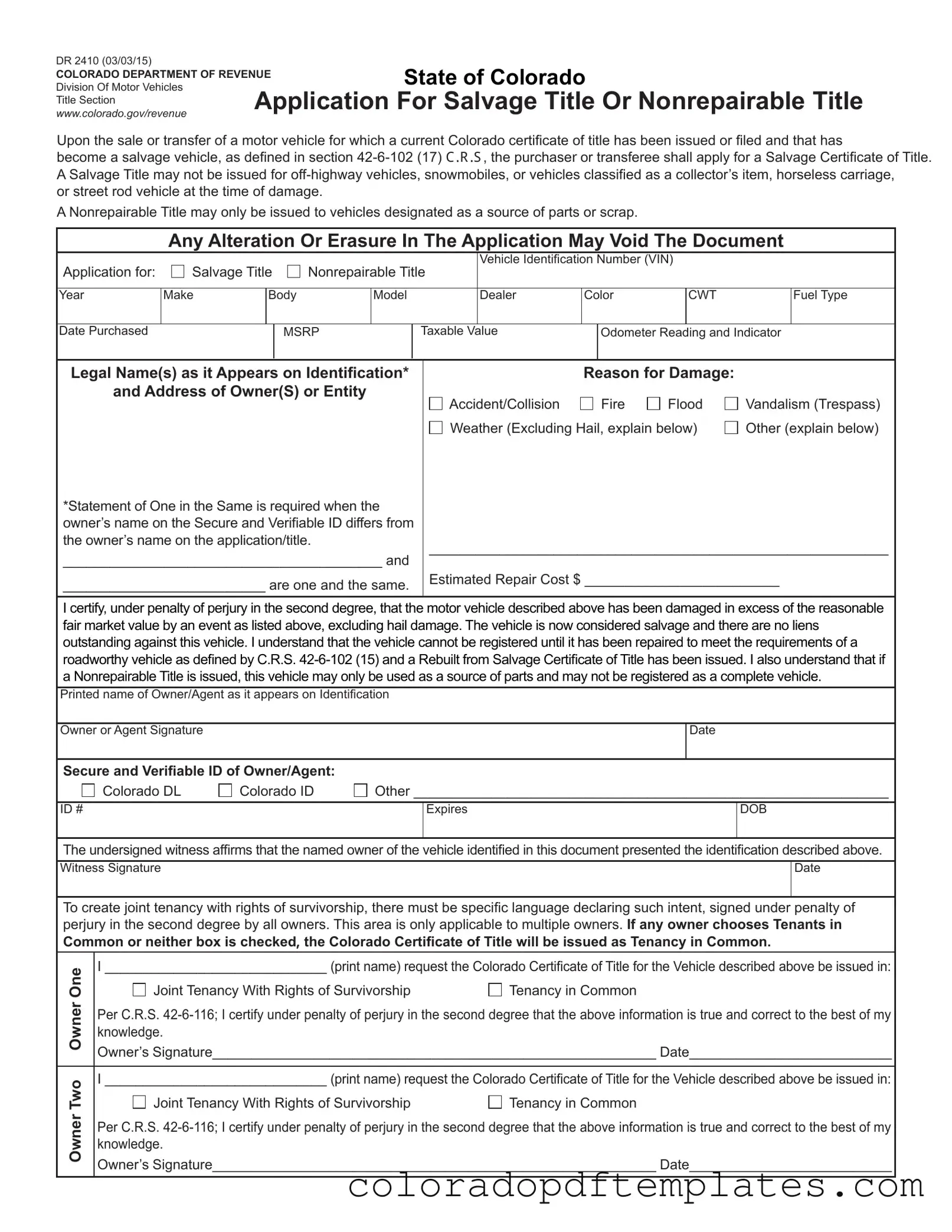The Colorado DR 2410 form is used to apply for a Salvage Title or a Nonrepairable Title for a motor vehicle that has been damaged beyond a certain threshold. When a vehicle is classified as a salvage vehicle due to accidents, fire, flood, or other significant damage, the owner must submit this form to the Colorado Department of Revenue. This process helps to ensure that vehicles are accurately documented and that their condition is clearly communicated to future buyers.
Any individual or entity that owns a vehicle that has been declared salvage or nonrepairable must complete the DR 2410 form. This includes private vehicle owners, dealerships, and businesses that have experienced a significant loss due to damage. The form must be filled out accurately to avoid any issues with title issuance.
What types of vehicles are eligible for a Salvage Title?
A Salvage Title can be issued for most motor vehicles that have been damaged and are no longer roadworthy. However, it is important to note that certain vehicles are excluded from receiving a Salvage Title. These include:
-
Off-highway vehicles
-
Snowmobiles
-
Vehicles classified as collector’s items
-
Horseless carriages
-
Street rod vehicles
These exclusions mean that if your vehicle falls into one of these categories, you will need to consider other options for documentation.
What is the difference between a Salvage Title and a Nonrepairable Title?
A Salvage Title is issued for vehicles that can potentially be repaired and returned to the road after meeting specific safety standards. In contrast, a Nonrepairable Title is designated for vehicles that are considered a total loss and can only be used for parts or scrap. Once a vehicle has a Nonrepairable Title, it cannot be registered as a complete vehicle.
When completing the DR 2410 form, you will need to provide several key pieces of information, including:
-
The Vehicle Identification Number (VIN)
-
The year, make, and model of the vehicle
-
The reason for the vehicle's damage
-
The estimated repair cost
-
Your legal name and address as they appear on your identification
Providing accurate information is crucial, as any alterations or errors may void the application.
After submitting the DR 2410 form, the Colorado Department of Revenue will review your application. If everything is in order, they will issue either a Salvage Title or a Nonrepairable Title based on the information provided. It's essential to understand that if a Salvage Title is issued, the vehicle must be repaired and pass safety inspections before it can be registered again. Conversely, if a Nonrepairable Title is issued, the vehicle can only be used for parts.
